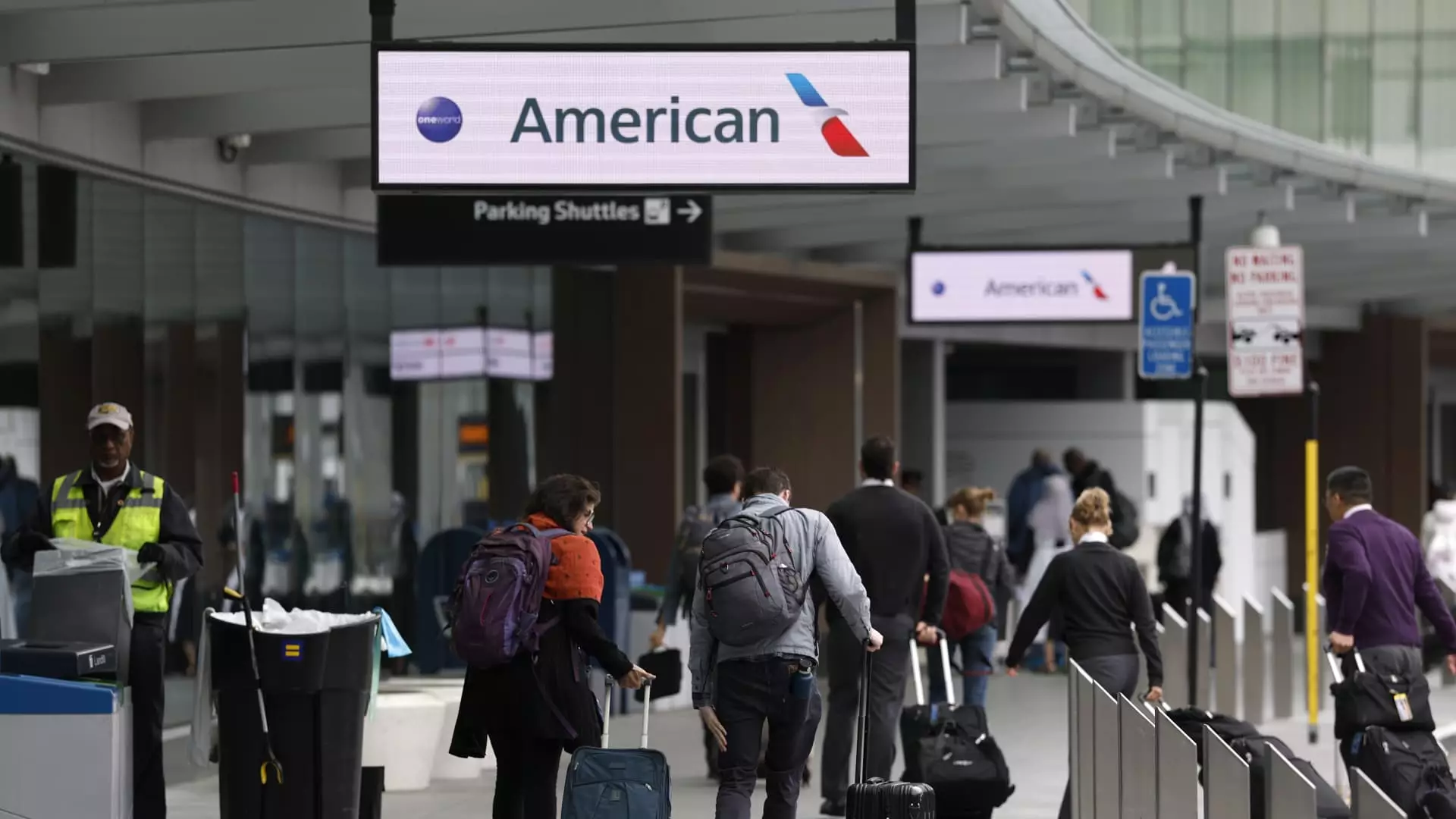Recent statements from airline CEOs have ignited discussions in the financial community about the increasingly delicate situation within the airline industry. As we move into 2025, it’s becoming evident that the previously predicted enthusiasm for domestic travel isn’t materializing as hoped. American Airlines’ CEO, Robert Isom, highlighted a concerning trend: the prevalent economic uncertainty is causing potential travelers to rethink their plans. This isn’t merely conjecture; it reflects a broader sentiment that spending discretionary income on travel is not a priority for many during turbulent economic times. The impact of former President Donald Trump’s fluctuating tariff policies and an unstable market landscape are contributing factors that many airline executives cite as crucial to the downturn.
Too Many Seats, Too Little Demand
The immediate consequence of this faltering demand is straightforward: airlines find themselves with an excess of available seats. As both Delta and United Airlines announced, these circumstances are compelling them to revise their growth strategies. Historically, the summer travel season has been a reliable boon for airlines, but caution now prevails. Even major operators like Southwest and American Airlines have retracted their financial outlooks for 2025, underscoring the unpredictability of the economic climate.
A worrying indicator comes from the recent drop in airfare, which posted a significant decline of 5.3% in March from the previous year, as per the Bureau of Labor Statistics. This decline illustrates that the competition among airlines is intensifying as they attempt to navigate disappointing demand. With a clear oversupply of seats, airlines might face a race to the bottom regarding ticket prices, which could further erode potential profit margins.
The Impact of Corporate Travel on Revenue
Corporate travel, a critical component of the airline industry’s financial health, has also suffered in this landscape of uncertainty. Corporate clients tend to be less price-sensitive and often book last-minute flights, which are typically priced at a premium. However, as noted by Conor Cunningham, a travel analyst from Melius Research, uncertain conditions lead businesses to curtail travel budgets. Consequently, Dynamics in corporate travel play a significant role in how airlines shape their business strategies. Delta’s initial 10% growth in corporate travel has plateaued, suggesting that businesses are hesitant to commit to travel, further highlighting the fear rippling through the economy.
Weaker Demand and Its Financial Ramifications
Alaska Airlines’ recent statements reveal even deeper challenges, predicting that weaker demand could detract from second-quarter earnings. CFO Shane Tackett’s comments underline that, despite high overall demand in the industry, it hasn’t reached anticipated heights. By lowering fares to fill seats, airlines are not only competing for customers but also risking their financial sustainability in the process. This precarious balancing act is indicative of the broader economics at play in the airline industry, where price wars could result from an oversupply situation and further squeeze profits.
International Travel vs. Domestic Trends
Interestingly, while domestic travel faces challenges, international flights show a different narrative. Executives note that U.S.-based travelers continue to explore international destinations, suggesting a dichotomy in travel preferences. Wealthier travelers may still perceive international travel as a viable option, which leads to sustained demand on those routes. This divergence only adds to the complexity of the airline industry’s recovery strategies. With a bifurcated market, airlines might need to re-evaluate where they invest their resources.
The Path Forward: Seeking Stability
In light of these industry changes, the restoring of certainty is on everyone’s lips. Isom believes that a definitive turn toward stabilization will herald a swift recovery. Unfortunately, conjectures alone won’t resolve the underlying issues plaguing the sector. Until airlines can navigate the uncertain waters crafted by fluctuating economic conditions, they may continue facing challenges that could redefine their operational frameworks. The focus should not merely be on restoring past norms; instead, this moment calls for a recalibration: finding innovative ways to engage travelers amidst continuing uncertainty while ensuring fiscal viability.

